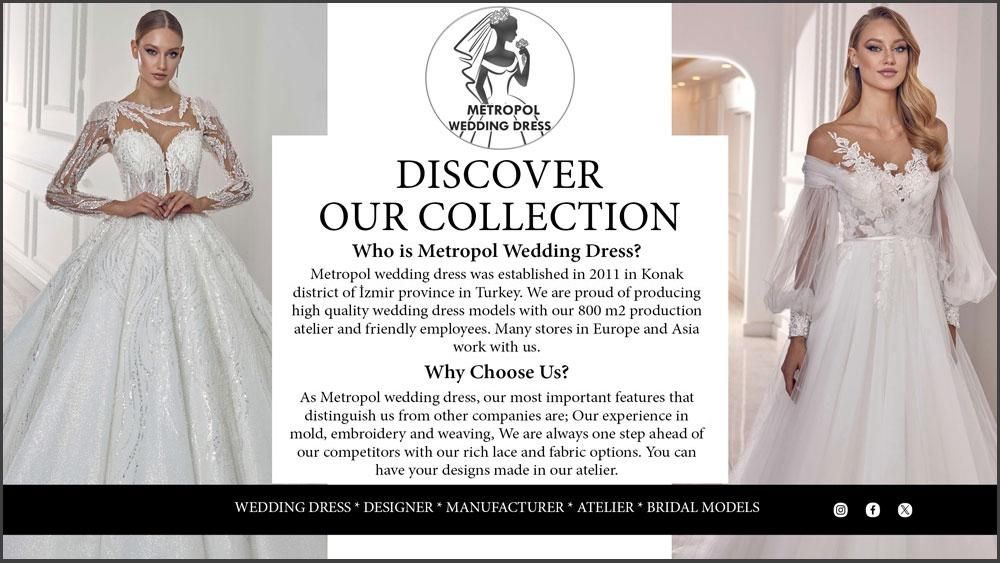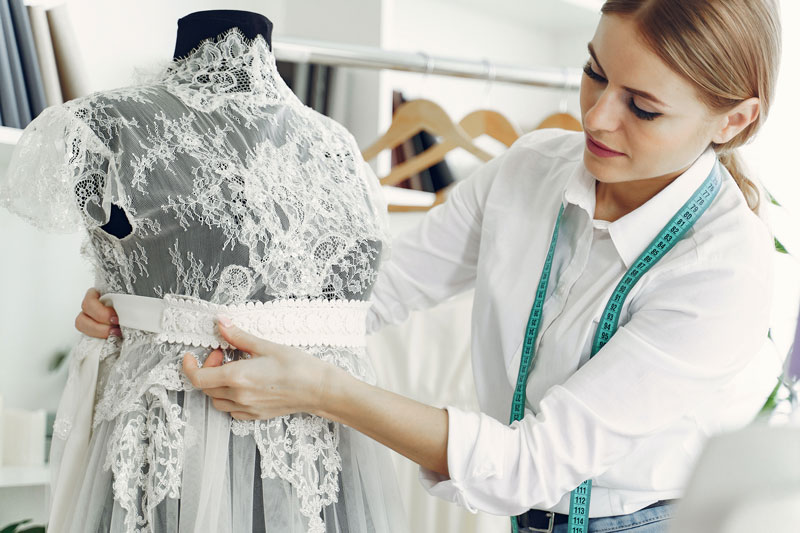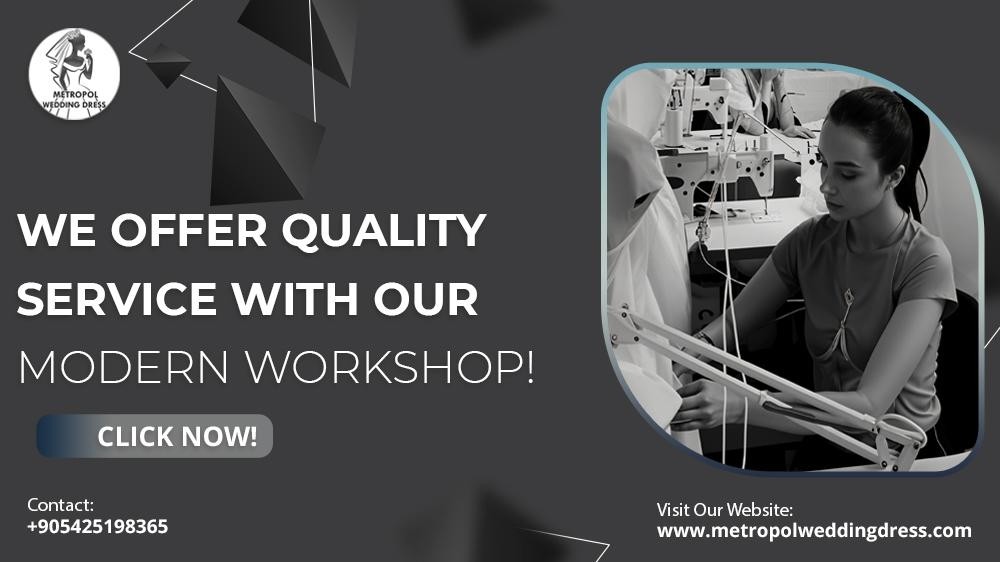
Banu Güven Wedding Dresses In the world of bridal fashion, where tradition often meets innovation, Banu Güven has emerged as a beacon of creativity and sophistication. Founded in 2013 by two entrepreneurial sisters in Istanbul, Banu Güven Bridal Design Studio has redefined couture wedding dresses with its unique blend of modern glamour and romantic elegance. The brand, led by its eponymous designer Banu Güven, has garnered international acclaim for its avant-garde approach, introducing color to traditionally achromatic bridal wear and employing distinctive drapage techniques that enhance fabric texture and silhouette. This article delves into the essence of Banu Güven Wedding Dresses, exploring the brand’s history, design philosophy, signature collections, cultural influences, and its impact on the global bridal fashion landscape.
The Origins of Banu Güven Bridal Design Studio
A Vision Rooted in Art and Craftsmanship
Banu Güven’s journey into bridal fashion began in 2003 while she was a student at the prestigious Mimar Sinan Fine Arts Faculty in Istanbul. Her early career was marked by a bold exploration of avant-garde, demi, and haute couture collections, designing gowns for international award shows, red-carpet events, and bridal wear. This diverse foundation allowed her to develop a keen sense of fabric manipulation and silhouette design, which would later become the hallmark of her bridal collections.
In 2012, Banu Güven made a significant breakthrough at the Istanbul Wedding Expo, where she challenged bridal fashion conventions by introducing color to the traditionally white wedding dress. Her innovative drapage techniques and focus on texture modality captivated audiences, leading to overwhelming demand for her designs. This pivotal moment inspired the establishment of Banu Güven Bridal Design Studio in 2013, a venture co-founded with her sister to bring her vision to a global audience.
A Women-Led Enterprise
One of the defining characteristics of Banu Güven Bridal Design Studio is its commitment to female empowerment. The brand is not only founded by two sisters but also boasts a core team where 90% of the members are women. This women-centric approach extends to the studio’s pet-friendly atelier, where Banu Güven’s French bulldog, Billy, serves as the welcoming mascot. The studio’s inclusive and creative environment fosters a sense of intimacy and personalization, ensuring that each bride feels uniquely celebrated.
The Design Philosophy of Banu Güven
Breaking the Mold of Bridal Tradition
Banu Güven’s design philosophy is rooted in a modern, sophisticated, and glamorous interpretation of romanticism. Unlike many bridal designers who follow seasonal trends, Güven draws inspiration from an inward exploration of nature, personal experiences, and cultural narratives. Her collections are a reflection of her journey as a woman, weaving stories of strength, resilience, and beauty into each gown.
Her signature style is characterized by:
- Innovative Drapage Techniques: Güven’s mastery of drapage enhances the natural flow and texture of fabrics, creating gowns that move gracefully with the bride.
- Texture Reconstruction: She reimagines traditional bridal fabrics like tulle, lace, and silk, adding depth and dimension through intricate layering and embroidery.
- Color in Bridal Wear: By introducing soft pastels, bold hues, and subtle metallics, Güven challenges the monochromatic norms of bridal fashion, appealing to brides who seek individuality.
- Personalization: Each gown is customized to reflect the bride’s body and personality, ensuring a deeply personal connection to the design.
Inspiration from Nature and Mythology
A notable example of Güven’s creative process is her collection inspired by the myth of Arachne, the weaver who challenged Athena and was transformed into a spider. This collection draws on the Fibonacci sequence, a mathematical pattern found in nature, to create intricate designs that mimic the delicate architecture of spider webs. Elements like boleros, headpieces, and pleated tulle incorporate this motif, symbolizing strength and creativity in the face of adversity. The collection is dedicated to “principled, courageous women,” reflecting Güven’s commitment to empowering her brides.
Banu Güven Wedding Dresses
The 2017 “Flow” collection, showcased at the W Hotel SuperJazz Lounge in Istanbul, exemplifies Güven’s ability to blend simplicity with sophistication. Described as “harika, samimi, özel, farklı, sade, gözalıcı” (wonderful, intimate, special, unique, simple, dazzling), the collection featured flowing silhouettes, delicate lace, and ethereal designs that captivated audiences. The event, documented by Wedding Photographer Turkey, highlighted the brand’s ability to create a sensory experience through fashion.
Subsequent collections, such as “Back to Nature’15” showcased at Fashionist’14, further emphasized Güven’s connection to organic themes. Models like Didem Soydan and Merve Büyüksaraç walked the runway in romantic gowns that celebrated nature’s beauty, reinforcing the brand’s reputation for innovative storytelling.
Craftsmanship and Customization
The Couture Process
At Banu Güven Bridal Design Studio, the couture process is an intimate journey that begins with a consultation at their Istanbul atelier on Öksüz Çocuk Sokak in Beşiktaş. Brides are invited to share their vision, preferences, and personal stories, which Güven and her team translate into bespoke designs. The studio’s pet-friendly environment and personalized approach create a welcoming space where brides feel heard and understood.
Each gown is crafted with meticulous attention to detail, using high-quality fabrics like tulle, lace, and silk. Güven’s signature beaded tulle designs, such as those available at Designer Bridal Room in Hong Kong, feature intricate embroidery and delicate embellishments that elevate the gown’s aesthetic. The studio’s commitment to customization ensures that every dress is tailored to the bride’s body, enhancing her natural elegance and confidence.
Sustainability and Ethical Practices
While specific details about Banu Güven’s sustainability practices are not widely documented, the brand’s focus on couture and made-to-order designs suggests a commitment to reducing waste. By producing gowns tailored to individual clients rather than mass-producing collections, the studio minimizes excess inventory and promotes ethical craftsmanship. Additionally, the women-led team and pet-friendly atelier reflect a broader commitment to inclusivity and community.
Cultural Influences and Turkish Wedding Traditions
Blending Tradition with Modernity
Banu Güven’s designs are deeply influenced by her Turkish heritage, which she seamlessly blends with modern aesthetics. Turkish wedding traditions, such as the red ribbon belt tied around the bride’s waist for good fortune or the henna night (kına gecesi) where the bride wears a traditional kaftan, inspire elements of her collections. Güven’s introduction of color to bridal wear aligns with these traditions, offering brides a way to honor their cultural roots while embracing contemporary style.
For example, the red ribbon belt tradition, where the bride’s father or brother ties a red sash around her waist, is a symbol of prosperity and protection. Güven incorporates similar symbolic elements, such as colored accents or sashes, into her designs, allowing brides to connect with their heritage. Her gowns also appeal to brides participating in traditions like writing friends’ names under their shoes, a playful custom where the most worn-out name predicts the next to marry.
Global Appeal with Local Roots
While rooted in Turkish culture, Banu Güven’s designs have a universal appeal. Her gowns have been worn by brides in Austria, Bahrain, China, France, Mexico, Nigeria, Spain, the UAE, the UK, and beyond, showcasing the brand’s ability to resonate with diverse audiences. This global reach is attributed to Güven’s focus on universal themes like love, strength, and individuality, which transcend cultural boundaries.
The Impact of Banu Güven on Bridal Fashion
Redefining Bridal Aesthetics
Banu Güven’s introduction of color and innovative drapage has challenged the status quo in bridal fashion, encouraging brides to embrace individuality over conformity. Her designs stand out for their recognizable aesthetic, where viewers can identify a Banu Güven gown at first glance. This distinctiveness is a testament to her ability to create a cohesive brand identity while continuously pushing creative boundaries.
Her work has also influenced other designers to experiment with non-traditional elements in bridal wear. The use of color, once considered taboo, is now a growing trend, with designers worldwide incorporating pastels, metallics, and bold hues into their collections. Güven’s emphasis on texture and silhouette has also inspired a renewed focus on craftsmanship, encouraging designers to prioritize quality over quantity.
Organic Growth and Word-of-Mouth Success
Remarkably, Banu Güven Bridal Design Studio has achieved global recognition with nearly zero spending on public relations. The brand’s organic growth through word-of-mouth marketing speaks to the quality and impact of its designs. Brides who wear Banu Güven gowns become ambassadors for the brand, sharing their experiences and recommending the studio to others. This grassroots success underscores the authenticity and emotional resonance of Güven’s work.
Expanding Global Reach
Banu Güven’s dream is to make her couture experience accessible to brides worldwide. Her gowns are available through select retailers, such as Designer Bridal Room in Hong Kong, and second-hand platforms like Stillwhite, where brides can purchase discounted Banu Güven dresses. The brand’s presence at international events like Bridal Week and Fashionist has further elevated its profile, connecting with buyers and showrooms in the UK and beyond.
Signature Collections and Notable Designs
The Arachne Collection
The Arachne collection, inspired by the Greek myth, is one of Banu Güven’s most iconic. Drawing on the story of a weaver transformed into a spider, the collection uses the Fibonacci sequence to create intricate patterns reminiscent of spider webs. Elements like boleros, headpieces, and pleated tulle add a whimsical yet sophisticated touch, appealing to brides who seek both elegance and storytelling in their gowns.
I’m assuming you’re asking about wedding dress styles, but your query could also refer to people modeling wedding dresses or something else. If you meant something specific, please clarify, and I’ll tailor the response. Below, I’ll cover popular wedding dress silhouettes based on the context from recent sources, as they’re key to understanding what’s trending in bridal fashion.
Popular Wedding Dress Silhouettes
Wedding dress models (styles) vary by cut, fabric, neckline, and overall aesthetic, often tailored to body type, wedding venue, and personal style. Here are the main silhouettes, with details on their characteristics and suitability:
- A-Line
- Description: Named for its “A” shape, this style has a fitted bodice that flares out gradually from the waist to form a wider skirt. It’s less voluminous than a ball gown, offering a softer, more modern look.
- Best For: Universally flattering, ideal for most body types, including petite, curvy, or hourglass figures. It balances the upper body and provides coverage for hips or lower tummy. Perfect for beach, garden, or indoor weddings.
- Example: Often seen in romantic fabrics like lace or tulle, with variations like puffy or narrow A-cuts (bohemian styles).
- Ball Gown
- Description: Features a fitted, structured bodice with a dramatic, voluminous skirt, often with layers of tulle or a hoop skirt for added fullness. Think classic “princess” vibe.
- Best For: Brides wanting a fairy-tale look, especially for formal or grand venues like ballrooms. Best for those with smaller waists, as it emphasizes the waistline while covering hips. Less ideal for beach or casual settings due to restricted movement.
- Example: Gabrielle Union’s 2014 strapless sweetheart ball gown by Dennis Basso for her fairy-tale-themed wedding.
- Mermaid/Fishtail
- Description: Hugs the body through the bust, waist, and hips, flaring out dramatically below the hips or knees. Full fishtail flares at the knee, while half fishtail flares higher for more mobility.
- Best For: Hourglass figures, as it accentuates curves. Great for glamorous indoor weddings but less practical for beach or outdoor settings.
- Example: Rosa Clará’s mermaid dresses emphasize curves with luxurious fabrics like crepe or satin.
- Sheath/Column
- Description: A straight, sleek silhouette that skims the body’s natural contours without a defined waist. Often made with lightweight fabrics like chiffon or crepe.
- Best For: Minimalist or modern brides, especially for city or beach weddings. Suits slim or athletic builds but less forgiving for curvier figures.
- Example: Nicola Peltz’s minimal Valentino column dress with a square neckline for her wedding to Brooklyn Beckham.
- Fit and Flare
- Description: Similar to mermaid but flares out higher, typically around the hips or upper thighs, offering a less restrictive fit while still highlighting curves.
- Best For: Brides who want a fitted look with more movement, ideal for hourglass or curvy figures. Works for various venues, from indoor to outdoor.
- Example: Morilee’s fit-and-flare dresses with detachable sleeves or floral appliqués for versatility.
Notable Trends and Examples
- Non-Traditional Styles: Models like Hailey Bieber and Lara Stone have popularized unconventional choices. Bieber wore a lace Off-White gown with “Till Death Do Us Part” embroidered on the veil, while Stone chose a gold Givenchy mini dress.
- Boho-Chic: Popular for relaxed, nature-inspired weddings, with flowing fabrics like chiffon and bohemian details. Poppy Delevingne’s Chanel haute couture gown with floral appliqués is a prime example.
- Vintage and Minimalist: Inspired by icons like Grace Kelly (Miranda Kerr’s Dior gown) or Carolyn Bessette, these dresses focus on clean lines and timeless elegance.
- Multiple Looks: Modern brides often switch dresses for different parts of the event. Sofia Richie wore three Chanel dresses for her 2023 wedding, from a high-neck lace gown to a structured mini for the reception.
Fabrics and Details
- Common Fabrics: Lace (Chantilly, guipure), satin, tulle, chiffon, crepe, and mikado are popular. Glittery tulle is trending for 2025.
- Necklines and Sleeves: Sweetheart, V-neck, off-the-shoulder, and long sleeves are common. Detachable elements like trains or sleeves add versatility.
- Embellishments: Floral appliqués, Swarovski crystals, and embroidery add glamour, as seen in Oksana Mukha’s hand-crafted designs.
Choosing the Right Dress
- Body Type: A-line suits most shapes; ball gowns favor pear shapes; mermaid enhances hourglass; sheath for slim builds.
- Venue: Beach weddings favor lightweight sheath or boho A-line dresses; ball gowns suit grand venues; mermaid or fit-and-flare for indoor elegance.
- Budget: Average U.S. wedding dress costs $2,000-$4,000, but brands like David’s Bridal offer options from $100 to $2,000.
- Cultural Notes: White dresses, popularized by Queen Victoria in 1840, remain standard in Western traditions, but cultural variations (e.g., vibrant Nigerian designs) are gaining visibility.
Modeling Wedding Dresses
If you meant “wedding dress models” as in people modeling dresses, here’s a brief overview:
- Role: Bridal models showcase gowns in photoshoots, runway shows, or expos for designers, retailers, or magazines. They need confidence, poise, and the ability to highlight the dress’s design.
- Requirements: No strict height or size rules for all brands—some seek diverse body types, ages, or looks. A portfolio and basic modeling experience help.
- Opportunities: Jobs are available via retailers like David’s Bridal or designers like Pronovias. Check platforms like Indeed for openings.
Where to Find Dresses
- Retailers: Pronovias, David’s Bridal, Rosa Clará, and Morilee offer diverse collections with customizable options.
- Runway Samples: For unique dresses, check consignment stores or pop-up sales for runway samples (sizes 0-4 often available).
- Custom Options: Designers like Oksana Mukha offer tailoring for non-standard sizes.
If you’re looking for specific designers, inspiration from celebrity weddings, or advice on modeling, let me know, and I can dive deeper! For example, I can generate a chart comparing dress silhouettes if you’d like a visual. Just confirm your preference.
Since you clarified you’re interested in “modeling wedding dresses,” I’ll focus on what it means to be a wedding dress model, including the role, requirements, opportunities, and tips for breaking into the industry, drawing on relevant context from bridal fashion trends and modeling insights. If you meant something else, like specific dress styles for modeling or a different angle, please let me know!
Role of a Wedding Dress Model
Wedding dress models showcase bridal gowns for designers, retailers, or publications through photoshoots, runway shows, or bridal expos. Their job is to highlight the dress’s design, fit, and aesthetic, helping brides envision themselves in the gown. Models may also showcase accessories like veils, tiaras, or jewelry to complete the bridal look.
- Settings:
- Photoshoots: For bridal magazines (e.g., Brides, Vogue), designer lookbooks, or online retailers like David’s Bridal or Pronovias.
- Runway Shows: During bridal fashion weeks (e.g., New York Bridal Fashion Week) or designer showcases.
- Bridal Expos: Live modeling at trade shows or in-store events to engage directly with customers.
- Social Media/Content Creation: Modeling for Instagram, TikTok, or designer websites, often requiring dynamic poses or video content.
Requirements for Wedding Dress Models
Unlike high-fashion modeling, bridal modeling is more inclusive but still has specific expectations:
- Physical Requirements:
- No strict height or size rules, as bridal brands seek diversity to reflect real brides. Common sample sizes are 0-4 for runway, but plus-size, petite, and diverse body types are increasingly in demand.
- Confidence and poise are key to showcasing the dress’s elegance. A graceful walk and ability to pose naturally are essential.
- Clear skin, good posture, and a polished appearance help highlight the gown’s details.
- Experience and Skills:
- Prior modeling experience is helpful but not always required. Many bridal models start with local or retail gigs.
- Ability to convey emotion (e.g., joy, romance) through facial expressions and body language to match the bridal aesthetic.
- Comfort wearing heavy or intricate dresses, often with corsets, trains, or delicate fabrics like lace or tulle.
- Diversity and Inclusivity:
- Brands like Morilee and Rosa Clará increasingly feature models of varied ages, ethnicities, and sizes to appeal to a broader audience.
- Cultural representation is growing, with demand for models showcasing traditional dresses (e.g., Turkish embroidered gowns or Nigerian aso-oke styles, reflecting your interest in Turkish wedding dresses).
Opportunities in Bridal Modeling
- Retailers and Designers:
- Major retailers like David’s Bridal, Kleinfeld, or Nordstrom hire models for in-store events, online catalogs, or social media.
- Designers like Pronovias, Oksana Mukha, or Vera Wang seek models for runway shows or editorial shoots.
- Turkish designers (based on your prior interest) like those in Istanbul’s bridal districts (e.g., Fatih or Şişli) may hire for local or international campaigns, especially for boho or embroidered styles.
- Bridal Magazines and Media:
- Publications like Vogue Weddings or Martha Stewart Weddings need models for editorial spreads.
- Online platforms like The Knot or WeddingWire hire for digital content.
- Freelance and Local Gigs:
- Bridal expos or trunk shows (where designers showcase collections) often hire local models.
- Wedding dress manufacturers and exporters (as you’ve asked about before) may need models for trade shows or promotional materials.
- Compensation:
- Varies widely: $20-$100/hour for local retail gigs; $500-$5,000+ for professional photoshoots or runway, depending on the brand and market.
- Entry-level models may work for portfolio-building exposure, especially with smaller boutiques or startups.
How to Get Started
- Build a Portfolio:
- Include professional photos in diverse outfits (ideally some bridal or formal wear). Even a simple shoot in a white dress can mimic the bridal aesthetic.
- Highlight versatility with different poses, expressions, and settings (e.g., studio, outdoor).
- Find Agencies or Jobs:
- Agencies: Bridal modeling often falls under commercial or promotional modeling. Agencies like Wilhelmina or Ford Models have commercial divisions, but local agencies may focus on bridal.
- Direct Applications: Check job boards like Indeed, Model Mayhem, or Backstage for bridal modeling gigs.
- Turkish Market: In Istanbul, contact bridal shops or manufacturers in areas like Bağdat Avenue or online platforms like Modanisa for opportunities in Turkish-style wedding dresses (e.g., embroidered or boho designs).
- Network:
- Attend bridal expos or fashion events to meet designers, photographers, or retailers.
- Engage with brands on social media, tagging them in your modeling content.
- Training:
- Take modeling classes for runway walking or posing techniques.
- Practice wearing heavy gowns or heels to mimic bridal dress weight and movement.
- Social Media Presence:
- Build an Instagram or TikTok profile showcasing your modeling work. Post content in elegant, wedding-inspired outfits to attract designers.
- Example: Models like Ashley Graham have boosted their careers by showcasing bridal looks on social media.
Tips for Success
- Understand the Dress: Research the designer’s aesthetic (e.g., Pronovias’ romantic lace or Morilee’s boho embroidery) to embody their vision.
- Adapt to Trends: Familiarize yourself with 2025 trends like glittery tulle, detachable sleeves, or colorful embroidery (noted in your interest in colorful embroidered dresses).
- Professionalism: Be punctual, take direction well, and maintain a positive attitude, as bridal shoots can be long and detailed.
- Body Confidence: Bridal modeling emphasizes elegance, so focus on showcasing the dress rather than conforming to a specific look.
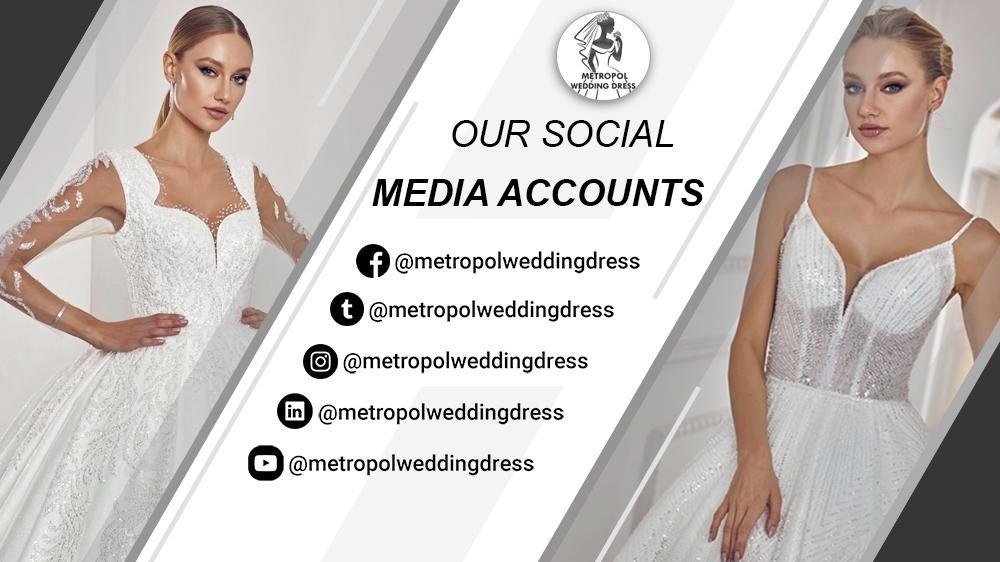
Turkish Wedding Dresses
Since you’ve previously asked about Turkish wedding dresses, here’s how modeling them might differ:
- Style: Turkish bridal gowns often feature intricate embroidery, vibrant details, or boho elements, as seen in designers like those on Istanbul’s bridal boutiques.
- Modeling Needs: Models may need to highlight cultural details, like hand-stitched patterns or traditional veils, with graceful movements.
- Market: Istanbul’s bridal industry is a global hub, exporting to Europe and the Middle East, so models may work for international campaigns or local shows.
Since you’re interested in modeling Turkish wedding dresses, I’ll focus on the characteristics of these dresses that models need to highlight, along with insights into their styles, cultural significance, and how to showcase them effectively in a modeling context. Your prior queries about Turkish wedding dresses, including styles, prices, and Istanbul’s bridal scene, suggest a focus on this niche, so I’ll tailor the response accordingly. If you meant something else, like sourcing dresses or specific designers, please clarify!
Characteristics of Turkish Wedding Dresses
Turkish wedding dresses blend cultural heritage with modern bridal trends, making them unique for modeling. Here’s what defines them:
- Styles and Silhouettes:
- Boho-Chic: Flowing A-line or sheath dresses with lightweight fabrics like chiffon or tulle, often seen in Istanbul’s bridal boutiques. Ideal for beach or garden weddings.
- Embroidered Gowns: Intricate hand-stitched patterns, including floral or geometric designs, reflecting Ottoman or Anatolian influences. These are heavier and suit formal venues.
- Princess/Ball Gown: Voluminous skirts with fitted bodices, popular for grand Turkish weddings, often adorned with lace or crystal embellishments.
- Mermaid/Fit-and-Flare: Curve-hugging styles that flare out, emphasizing elegance and modernity, common in urban bridal collections.
- Traditional Elements: Some dresses incorporate “bindallı” (ornate, velvet kaftan-style gowns) or headpieces like embroidered veils, especially for cultural ceremonies.
- Fabrics:
- Lace (Chantilly or guipure) for romantic looks.
- Satin or mikado for structured elegance.
- Tulle with glitter or embroidery for a dreamy effect.
- Velvet or brocade for traditional, regal designs.
- Details and Embellishments:
- Embroidery: Gold, silver, or colorful threads in floral or paisley motifs, often handcrafted, as seen in dresses from Istanbul’s Fatih district.
- Beading and Crystals: Swarovski or pearl accents for glamour.
- Cultural Touches: Sashes, belts, or capes inspired by Turkish heritage, sometimes with red or gold accents symbolizing prosperity.
- Modern Trends: Detachable trains, sleeves, or capes for versatility, aligning with 2025 bridal trends.
- Colors:
- White or ivory dominates, but off-white, champagne, or blush tones are popular.
- Traditional dresses may include red (symbolizing luck) or gold for cultural events like henna nights.
Modeling Turkish Wedding Dresses
As a model, your role is to showcase the dress’s craftsmanship, cultural details, and versatility. Here’s how to excel:
- Highlighting Key Features:
- Embroidery: Use subtle hand movements or poses to draw attention to intricate patterns, especially on sleeves, bodices, or trains. For example, gently lifting the skirt can show off floral stitching.
- Silhouette: Emphasize the dress’s shape with confident posture. For A-line or boho dresses, flowy poses work; for mermaid gowns, statuesque stances highlight curves.
- Accessories: Turkish dresses often come with veils, tiaras, or belts. Model these with grace, ensuring they complement rather than overshadow the gown.
- Cultural Elements: For traditional bindallı or kaftan-inspired dresses, adopt regal poses to reflect their historical significance.
- Posing and Movement:
- Runway: Walk with a slow, elegant gait to let the dress’s details (e.g., a long train or glittery tulle) catch the light. Practice moving in heavy fabrics or heels to avoid tripping.
- Photoshoots: Use soft, romantic expressions to match the bridal mood. For boho dresses, relaxed, natural poses work; for ball gowns, structured, poised stances are better.
- Dynamic Content: For social media or video, twirl to show skirt volume or adjust the veil to highlight its embroidery.
- Cultural Sensitivity:
- Understand the dress’s context. For example, bindallı gowns are worn during henna ceremonies, so modeling them may require a joyful, celebratory demeanor.
- Respect traditional elements like red sashes or gold embroidery, which carry symbolic meaning (e.g., fertility, wealth).
- Settings:
- Photoshoots: Turkish dresses shine in Istanbul’s historic venues (e.g., Topkapı Palace, Bosphorus waterfront) or rustic settings for boho styles.
- Runway: Bridal shows in Istanbul’s fashion districts like Nişantaşı or at events like IF Wedding Fashion İzmir feature these gowns.
- Expos: Model at Turkey’s bridal fairs, where manufacturers and boutiques showcase collections.
Opportunities for Modeling Turkish Wedding Dresses
Turkey, especially Istanbul, is a global bridal fashion hub, exporting dresses to Europe, the Middle East, and beyond. Here’s how to tap into this market:
- Designers and Boutiques:
- Istanbul brands like Akay Gelinlik, Beyaz Butik, or Pronovias Türkiye hire models for runway and catalog shoots.
- Smaller ateliers in Fatih or Şişli seek models for local campaigns, especially for embroidered or boho styles.
- Designers like Dilek Hanif blend Turkish heritage with haute couture, offering high-profile modeling gigs.
- Bridal Fairs and Expos:
- IF Wedding Fashion İzmir: Turkey’s largest bridal expo, where models showcase collections for international buyers.
- Istanbul Bridal Week: Features top designers and needs diverse models.
- Local events in Bağdat Avenue boutiques often hire for in-store modeling.
- Online Platforms:
- E-commerce sites like Modanisa or Gelinlik Modelleri need models for Turkish-style dresses, especially modest or embroidered designs.
- Social media campaigns for brands like Oksana Mukha Türkiye rely on Instagram or TikTok content creators.
- How to Apply:
- Agencies: Contact Istanbul-based agencies like Icon Talent or Base Model Management, which handle commercial and bridal work.
- Direct Outreach: Visit bridal shops in Istanbul’s bridal districts or check job boards like Kariyer.net for modeling gigs.
- Portfolio: Include shots in white or embroidered dresses to mimic Turkish bridal aesthetics. Highlight versatility with traditional and modern looks.
- Compensation:
- Local gigs: $50-$200/hour for boutique shoots or expos.
- Professional campaigns: $500-$2,000+ for designer or export-focused shoots.
- Entry-level models may start with trade-for-photos deals to build experience.
Tips for Success
- Research the Brand: Know the designer’s style (e.g., Akay’s boho elegance vs. Beyaz Butik’s traditional glamour) to tailor your poses.
- Practice with Fabrics: Turkish dresses can be heavy or delicate. Rehearse moving in long trains or embroidered gowns to avoid damage.
- Social Media: Post content in Turkish-inspired outfits (e.g., lace or embroidered dresses) to attract local designers. Use hashtags like #Gelinlik or #TurkishBridal.
- Network: Attend Istanbul’s bridal events or connect with photographers specializing in weddings (check Instagram for local talent).
- Modest Styles: Since you’ve asked about modest Turkish dresses, note that many brands cater to conservative brides. Practice modeling with long sleeves or high necklines to appeal to this market.
Cultural and Market Context
- Cultural Significance: Turkish weddings often span multiple events (henna night, ceremony, reception), so dresses vary from traditional bindallı to modern white gowns. Models may need to showcase multiple looks.
- Istanbul’s Role: The city’s bridal districts (Fatih, Şişli, Bakırköy) and export industry make it a hotspot for modeling opportunities. Prices for Turkish dresses range from $500-$5,000, with custom embroidery adding cost, which models should understand for high-end gigs.
- Trends: 2025 trends include colorful embroidery, detachable elements, and glittery tulle, which models should emphasize in dynamic poses.
Since you’re interested in modeling Turkish wedding dresses and specifically mentioned ball gowns, I’ll focus on Turkish ball gown wedding dresses, their characteristics, how to model them effectively, and their place in the Turkish bridal market. I’ll assume you’re seeking insights for modeling these dresses, but if you meant something else (e.g., sourcing ball gowns, styling tips, or a general overview), please clarify, and I’ll adjust the response. Your prior interest in Turkish wedding dresses and modeling in Istanbul as the context, so I’ll integrate that where relevant.
Characteristics of Turkish Ball Gown Wedding Dresses
Ball gowns are a popular silhouette in Turkish bridal fashion, known for their dramatic, fairy-tale aesthetic. They align with Turkey’s love for grand, elegant wedding celebrations. Here’s what defines them:
- Silhouette:
- Fitted bodice that cinches the waist, often with corset-style boning for structure.
- Voluminous, floor-length skirt, typically created with layers of tulle, satin, or organza, sometimes supported by a hoop or crinoline for extra fullness.
- Long trains (cathedral or chapel length) are common, adding drama for formal venues.
- Fabrics:
- Satin or Mikado: For a polished, structured look, often used in Turkish ball gowns for urban weddings.
- Tulle: Layered for a soft, dreamy effect, sometimes with glitter for 2025 trends.
- Lace: Chantilly or guipure lace overlays on the bodice or skirt, incorporating floral or Ottoman-inspired patterns.
- Velvet: Occasionally used for traditional or winter weddings, adding a regal touch.
- Details and Embellishments:
- Embroidery: Hand-stitched gold, silver, or colorful threads with floral or geometric motifs, reflecting Turkish craftsmanship (e.g., Anatolian or Ottoman designs).
- Beading: Swarovski crystals, pearls, or sequins on the bodice or skirt for sparkle, popular in Istanbul’s high-end boutiques.
- Cultural Accents: Some ball gowns feature sashes, belts, or capes with Turkish motifs, like crescent moons or stylized tulips.
- Modern Touches: Detachable trains, off-the-shoulder straps, or sheer sleeves for versatility, aligning with global 2025 bridal trends.
- Necklines and Sleeves:
- Sweetheart, V-neck, or off-the-shoulder necklines are common, enhancing the romantic vibe.
- Long lace sleeves or detachable cap sleeves add elegance, especially for modest Turkish brides.
- High necklines with sheer illusion panels are popular for conservative styles.
- Colors:
- White or ivory dominates, but Turkish ball gowns may include champagne, blush, or gold undertones.
- Traditional accents (e.g., red or gold embroidery) may appear for cultural significance, especially for henna night transitions.
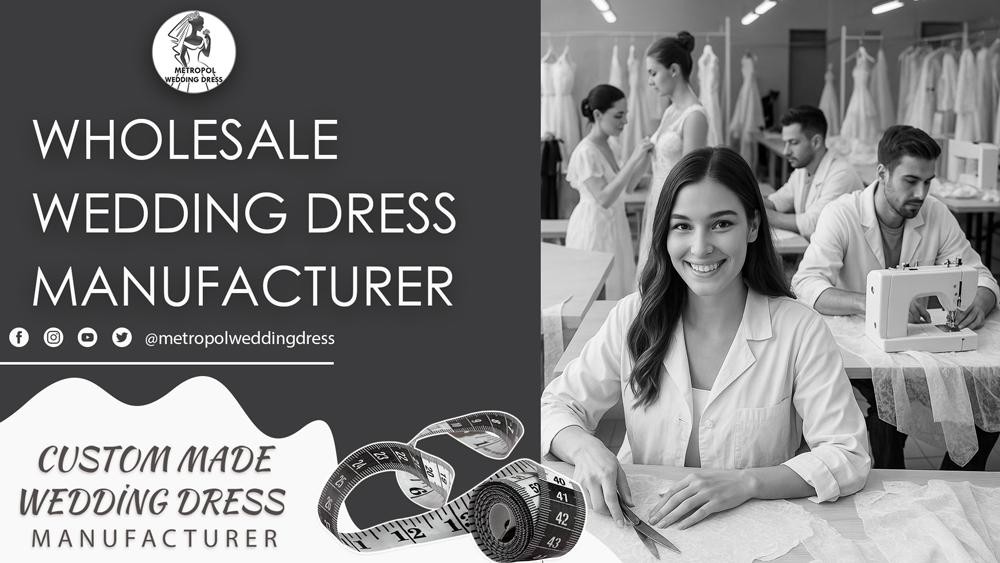
Modeling Turkish Ball Gown Wedding Dresses
As a model, your goal is to showcase the gown’s grandeur, craftsmanship, and cultural details while embodying the elegance of a Turkish bride. Here’s how to excel:
- Highlighting Key Features:
- Volume: Emphasize the skirt’s fullness with wide, graceful poses or gentle twirls to show movement. For example, slightly lift the skirt to reveal layers of tulle or embroidery.
- Bodice Details: Use hand placement (e.g., on the waist or near the neckline) to draw attention to lace, beading, or corset structure.
- Train: Position yourself to display the train’s length and design, especially in photoshoots. A side or back pose works well.
- Cultural Elements: For gowns with Ottoman-inspired embroidery or sashes, adopt regal postures to reflect their heritage.
- Posing and Movement:
- Runway: Walk slowly with an upright posture to let the gown’s volume and train flow naturally. Practice navigating long trains or heavy fabrics to avoid tripping. Keep shoulders back to accentuate the fitted bodice.
- Photoshoots: Use statuesque, poised poses for a princess-like vibe. For example, stand with one hand on your hip and the other resting on the skirt to highlight the silhouette. Soft smiles or serene expressions match the romantic aesthetic.
- Dynamic Content: For social media or video (e.g., Instagram Reels), twirl to showcase the skirt’s flare or adjust the train to highlight its embroidery. Slow-motion clips can emphasize glittery tulle or beaded details.
- Cultural Sensitivity:
- Turkish ball gowns often blend modern and traditional elements. For example, a gown with a gold-embroidered sash may symbolize prosperity, so model it with confidence and grace.
- If the gown is paired with a traditional veil or headpiece (e.g., for henna ceremonies), ensure it’s styled correctly and highlighted in poses.
- Adapting to Trends:
- 2025 trends include glittery tulle and detachable elements (e.g., overskirts or sleeves). Practice modeling these to show versatility, such as removing a train for a reception-ready look.
- For modest Turkish brides, emphasize long sleeves or high necklines with elegant, understated poses.
- Settings:
- Photoshoots: Turkish ball gowns shine in Istanbul’s grand venues like Çırağan Palace or historic mosques, which complement their opulence. Outdoor shoots in Bosphorus gardens can highlight boho-inspired ball gowns.
- Runway: Model at events like IF Wedding Fashion İzmir or Istanbul Bridal Week, where ball gowns are a highlight.
- Expos: Bridal fairs in Istanbul’s Fatih or Şişli districts feature ball gowns for export markets, requiring models to engage buyers.
Turkish Market for Ball Gown Wedding Dresses
Turkey’s bridal industry, centered in Istanbul, is renowned for its quality and affordability, making ball gowns a staple for both local and international brides. Here’s how this impacts modeling:
- Designers and Boutiques:
- Akay Gelinlik: Known for luxurious ball gowns with intricate embroidery, often hiring models for runway and catalog shoots.
- Beyaz Butik: Offers grand ball gowns with Ottoman-inspired details, seeking models for Istanbul-based campaigns.
- Pronovias Türkiye: Features modern ball gowns with global appeal, needing models for high-profile shoots.
- Smaller ateliers in Fatih or Bakırköy produce custom ball gowns, hiring models for local promotions or export lookbooks.
- Bridal Fairs and Expos:
- IF Wedding Fashion İzmir: Turkey’s largest bridal expo, where ball gowns are showcased for international buyers. Models are needed for runway and booth presentations.
- Istanbul Bridal Week: Highlights designers like Dilek Hanif, whose ball gowns blend Turkish heritage with couture.
- Local events in Şişli or Bağdat Avenue boutiques often feature ball gowns for in-store modeling.
- Export Market:
- Turkey exports wedding dresses to Europe, the Middle East, and the U.S., with ball gowns popular for their universal appeal. Models may work for manufacturers creating promotional materials for these markets.
- Prices range from $1,000-$5,000, with custom embroidery or luxury fabrics (e.g., mikado) increasing costs, which models should understand for high-end gigs.
- Online Platforms:
- Sites like Modanisa or Gelinlik Modelleri feature ball gowns, especially modest designs, and hire models for e-commerce shoots.
- Social media campaigns on Instagram or TikTok need models to showcase ball gowns’ dramatic silhouettes.
Opportunities for Modeling Ball Gowns in Turkey
- How to Apply:
- Agencies: Istanbul agencies like Icon Talent or Base Model Management handle bridal modeling. Submit a portfolio with formal or white dress shots to mimic ball gown aesthetics.
- Direct Outreach: Contact boutiques in Istanbul’s bridal districts (Fatih, Şişli, Bakırköy) or check Kariyer.net for modeling gigs.
- Social Media: Post content in elegant, voluminous dresses using hashtags like #Gelinlik or #TurkishBallGown to attract designers.
- Compensation:
- Local boutique shoots or expos: $50-$200/hour.
- Designer campaigns or export promotions: $500-$2,000+ per shoot.
- Entry-level models may start with trade-for-photos deals to build portfolios.
- Networking:
- Attend Istanbul’s bridal fairs or visit boutiques in person to meet designers.
- Connect with local photographers specializing in weddings via Instagram for test shoots.
Tips for Modeling Turkish Ball Gowns
- Master the Weight: Ball gowns are heavy (5-15+ lbs) due to layers or embroidery. Practice walking and posing in similar garments to build stamina.
- Emphasize Drama: Use bold, confident poses to match the gown’s grandeur. For example, stand with a wide stance or angle your body to show the skirt’s width.
- Highlight Accessories: Ball gowns often pair with long veils or tiaras. Practice adjusting these gracefully to complement the dress.
- Modest Variations: Many Turkish ball gowns cater to modest brides with long sleeves or high necklines. Model these with refined, conservative poses to appeal to this market.
- Cultural Prep: Research the designer’s inspiration (e.g., Ottoman embroidery) to convey the gown’s story authentically.
Example Scenario
Imagine modeling an Akay Gelinlik ball gown with a glittery tulle skirt, gold-embroidered bodice, and cathedral train at IF Wedding Fashion İzmir. You’d walk the runway with a slow, regal stride, pausing briefly to showcase the train. In a photoshoot, you’d pose in Çırağan Palace’s ballroom, lifting the skirt slightly to reveal embroidery, with a serene smile to evoke bridal joy.



